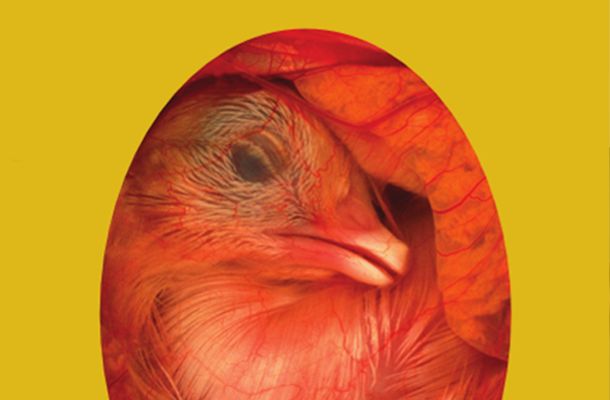Understanding the biology behind incubation temperature
Tags: Incubation | Whitepaper
, 16 September 2025

One very important success criteria for the incubation process is the correct incubation temperature. When referring to incubation temperature it is important to distinguish between air temperature, measured by the temperature sensor in the incubator, and eggshell temperature (EST).
The EST serves as a reference for embryonic temperature. Many scientific studies support the importance of maintaining an EST of 100°F throughout all phases of embryonic development (differentiation, growth and maturation), although the embryos can handle minor (short-term) variations without significant developmental damage. In practice, this means that the EST should be the leading steering parameter to design an incubation programme in which the air temperature is adjusted to keep the eggs in the incubator at around 100°F.
The crucial role of the chorioallantois membrane
During the differentiation and growth phases, the speed of embryonic growth and metabolism largely depends on temperature. Temperature uniformity in the incubator is very important in these stages for creating a narrow hatch window. To be able to grow and develop, the embryo relies heavily on the oxidation of yolk lipids to meet its energy demand. The chorioallantois membrane (CAM) supplies the oxygen. However, until the CAM is sufficiently developed to meet the demand, the embryo relies on anaerobic glycolysis of carbohydrates as an energy source, which is present in the egg in a limited amount and is depleted after the first week of incubation.

At around day 16 of incubation, marked by the transition from the growth to the maturation phase, the embryo reaches its maximum oxygen uptake potential. If the embryo is exposed to overheating, the oxygen requirement increases and the embryo must use less oxygen-demanding energy sources. First, it will tap into the glycogen reserves that it has built up (limited availability and needed to complete the energy-demanding hatching process), and second into protein from the muscles. However, using these alternative energy sources negatively affects hatchability and chick quality.
The maximum oxygen uptake through the CAM is determined by its vascularisation and the eggshell conductance. In turn, the eggshell conductance depends on the structure and density of the pores and the shell thickness. If the eggshell conductance is lower, the embryo will reach the maximum oxygen uptake sooner, and consequently be more sensitive to high a EST (>102⁰F).
The consequences of overheating
Prolonged exposure to a high EST leads to lower organ weights, such as smaller hearts, and more chicks hatching with poorly closed navels, thick bellies and lower yolk-free body mass as the embryo could not fully utilise the yolk lipids. The level of late embryonic mortality will be higher and a characteristic symptom during an egg breakout will be a higher incidence of malpositioning (head over wing). Farm performance can also decrease, through increased mortality, a higher feed conversion ratio and greater disease susceptibility, for example to ascites.
While the mechanisms behind a high EST are starting to unravel, the effects of (periods of) low EST are still unclear. It is certain that prolonged periods of low EST (<100⁰F) slow down development due to the poikilothermic nature of the embryo. If pulling time is not corrected accordingly, this leads to lower hatchability. The precise mechanisms of a low EST and consequences on chick quality, especially robustness and farm performance, have not yet been as intensively studied as a high EST, and results are more ambiguous. Controversially, strategic short-term temperature deviations (a couple of hours higher or lower than 100⁰F) during specific stages of embryonic development have shown potential positive effects on chick robustness.
Advice:
- Monitor EST regularly at different stages of embryonic development.
- Conduct a breakout of unhatched eggs if hatchability is lower than expected.
- Check EST if the following situations occur in your hatchery:
- many second-grade chicks;
- many chicks with full bellies and/or badly closed navels;
- high first-week mortality in the farm;
- high occurrence of late embryonic death;
- high occurrence of head over wing.
Written by Lotte Hebbink
Incubation specialist
I welcome your feedback on this article - and if you require any additional information, please don't hesitate to contact me.